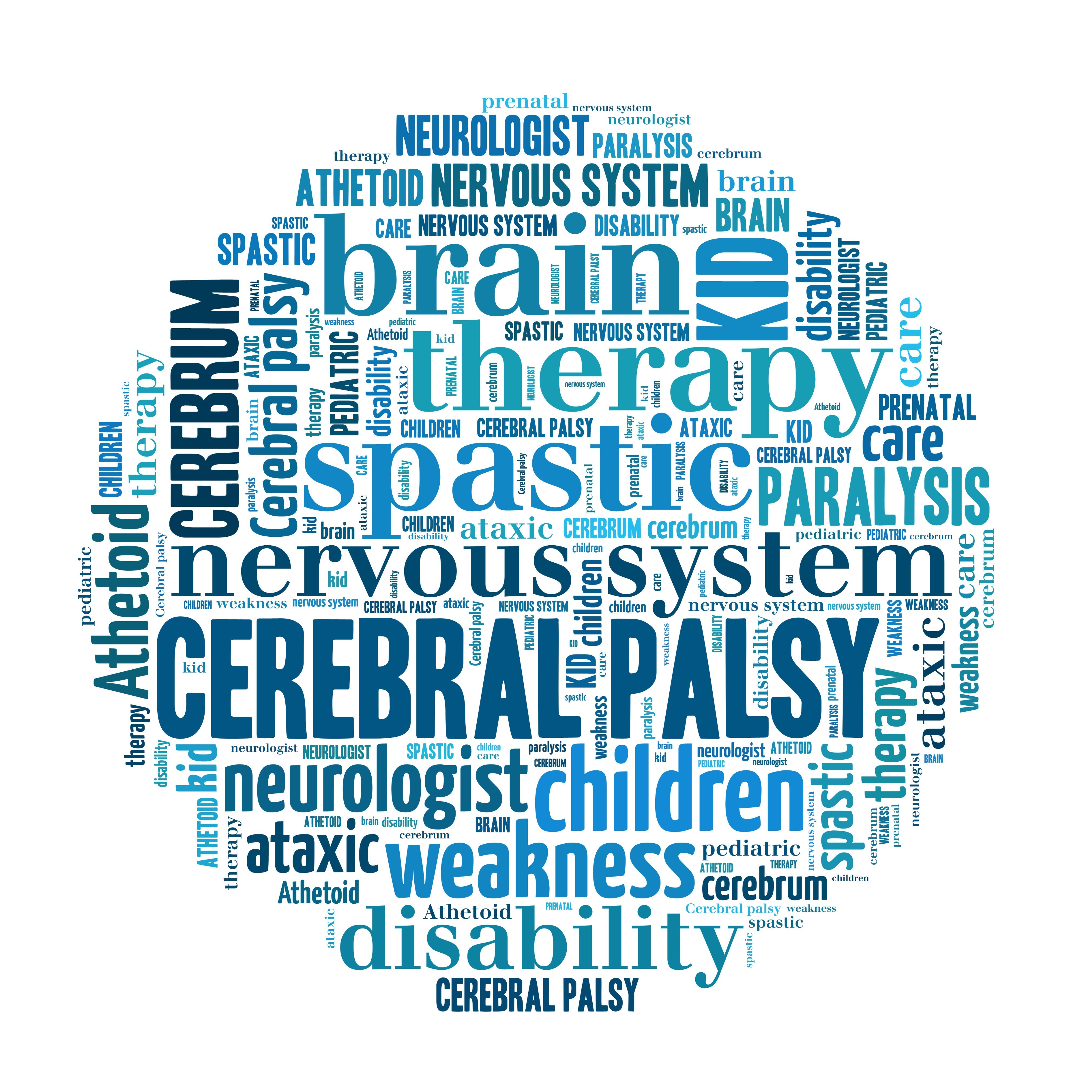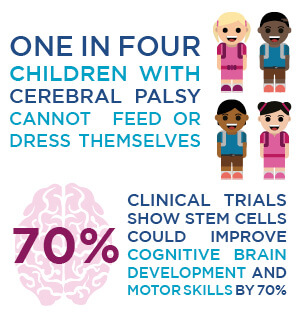Cerebral Palsy
The condition can be defined using two overlapping methods; the body part involved and the type of movements made.
Type of Movement:
- Spastic – This is the most common type. Movement is limited by one or multiple stiff muscle groups resulting in stiff and jerky movements.
- Athetoid – Hyptonia, poor (floppy) muscle tone.
- Ataxic – Poorly coordinated movements and low muscle tone.
- Mixed – A combination of the above.
Body Part Involvement:
- Hemiplegia – One arm and one leg on the same side of the body are affected
- Diplegia – Predominantly both legs are affected with some movement in the arms
- Quadriplegia – All four limbs are affected [2]
Currently there is no cure for cerebral palsy and treatments are aimed at lessening the symptoms. The cost to the NHS alone is £4 million per year for 110,000 sufferers [1].

Cerebral Palsy Facts
- It is the most common disability in childhood [3]
- 60% of all children born with it are born at term [3]
- Half of people living with the condition live in chronic pain [3]
- It affects 17 million people globally [3]
- In most cases, brain injury leading to the condition occurs in pregnancy [3]
- It affects 1 in 400 children in the UK [4]
- For every 100 girls with cerebral palsy, there are 135 boys with cerebral palsy [5]
- Approximately 1,800 children are diagnosed with the condition every year [5]
- There are an estimated 30,000 children with cerebral palsy in the UK [5]
- Approximately a quarter of children with the condition are reported to have epileptic seizures [5]
Cerebral Palsy and Cord Blood Stem Cells
There are currently 29 clinical trials investigating the application of stem cells in cerebral palsy [6]. Clinical trials using cord blood stem cells to treat the condition have had some very exciting results.
One study in South Korea used allogeneic cord blood to treat participants. The study was the first of its kind to publish its findings which showed cord blood had made dramatic improvements in movement, brain development and cog,nition.
Possibly the most publicised trials for treating cerebral palsy using cord blood stem cells are those headed by Dr. Joanne Kurtzberg of Duke University. The team at Duke have used cord blood infusions in the treatment of brain injuries and cerebral palsy. Within a year, children who received one intravenous dose of at least 25 million cells per kilogram of body weight saw significant improvements in motor function compared to those in the placebo group.[7]
The success of the trials at Duke has enabled Kurtzberg and her team to secure a $15 million grant to explore and research the potential of cord blood in treating an array of brain disorders.
Our releases
In 2018, Cells4Life released our first cord blood sample for the treatment of cerebral palsy.
The sample belonged to the Shetty family, who hoped to use their second child’s cord blood to treat their first, Jay.
Jay suffers from a debilitating form of cerebral palsy that means he cannot walk, talk, or even sit unaided. He is now taking part in the Duke University trial.
Cerebral Palsy and Stem Cell Headlines
Cerebral Palsy Breakthrough Gives Infants New Hope
Could a baby’s own umbilical cord blood prevent them from developing cerebral palsy?
Boy, 2, is the first to have cerebral palsy ‘successfully treated’ using stem cells, taking him from a vegetative state to walking and talking
References
- https://cells4life.com/clinical-update/
- http://www.downstate.edu/peds/Karp/handicap1645.html
- http://yourcpf.org/statistics/
- http://www.scope.org.uk/support/families/diagnosis/cerebral-palsy
- http://www.thepacecentre.org/Groups/211054/Stats_And_Facts.aspx
- https://clinicaltrials.gov/ct2/results?term=stem+cells+cerebral+palsy&Search=Search
- https://corporate.dukehealth.org/news-listing/umbilical-cord-blood-improves-motor-skills-some-children-cerebral-palsy
- https://doi.org/10.1002/sctm.20-0470
- https://doi.org/10.1186/s12883-022-02636-y The information contained in this article is for information purposes only and is not intended to replace the advice of a medical expert. If you have any concerns about your health we urge you to discuss them with your doctor.


